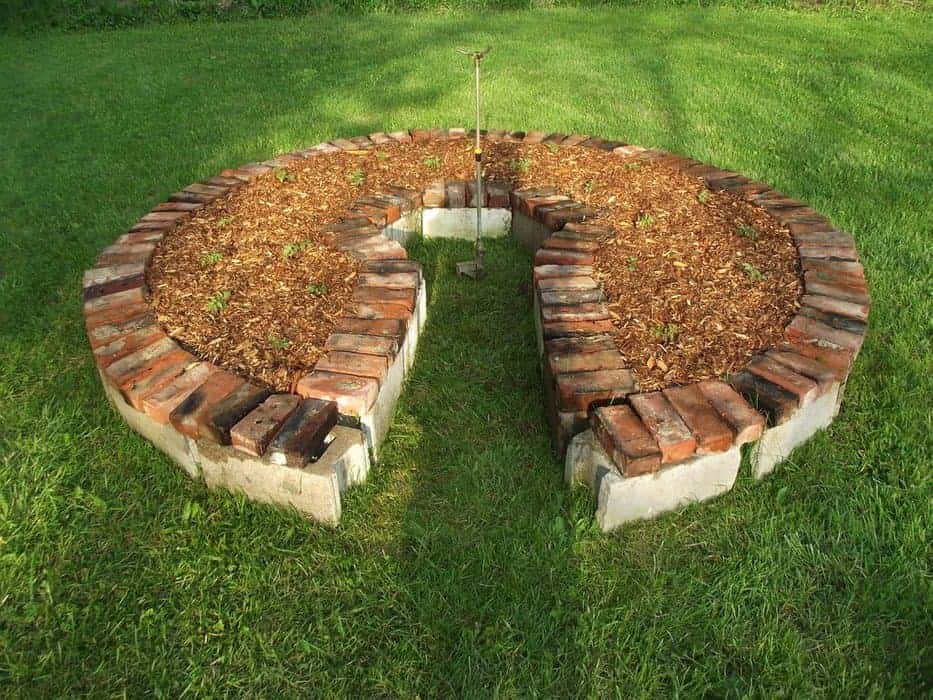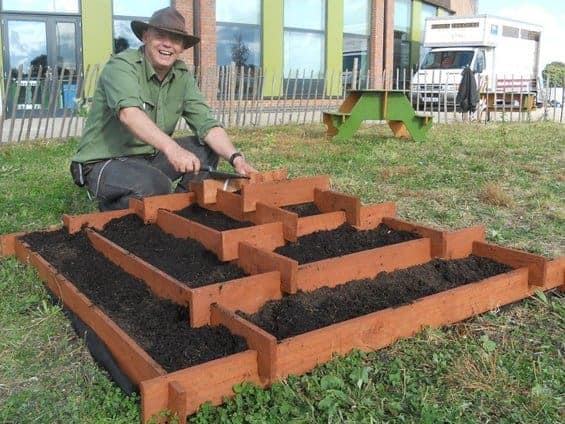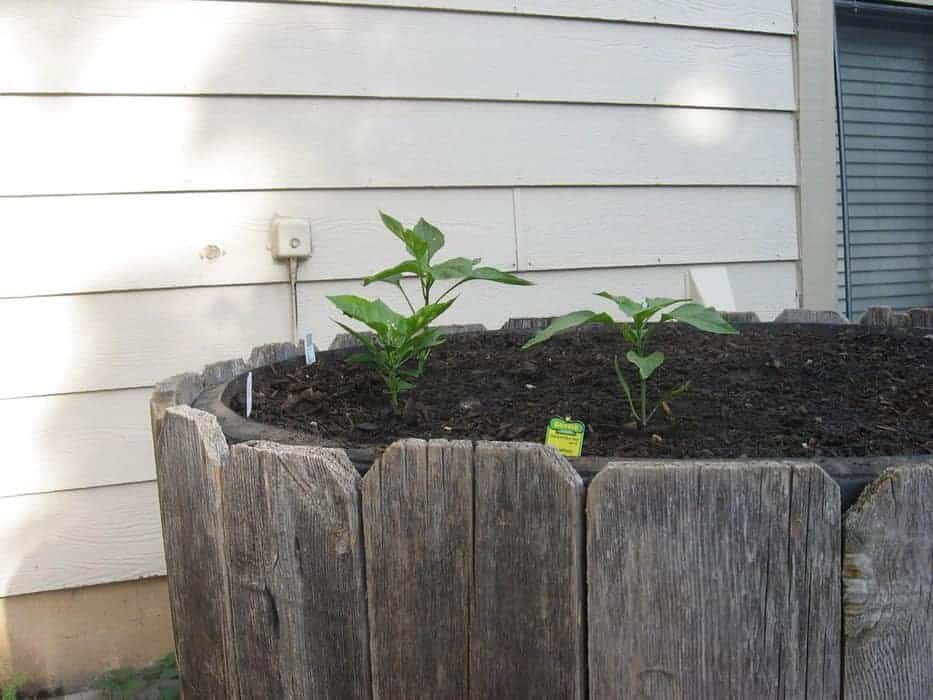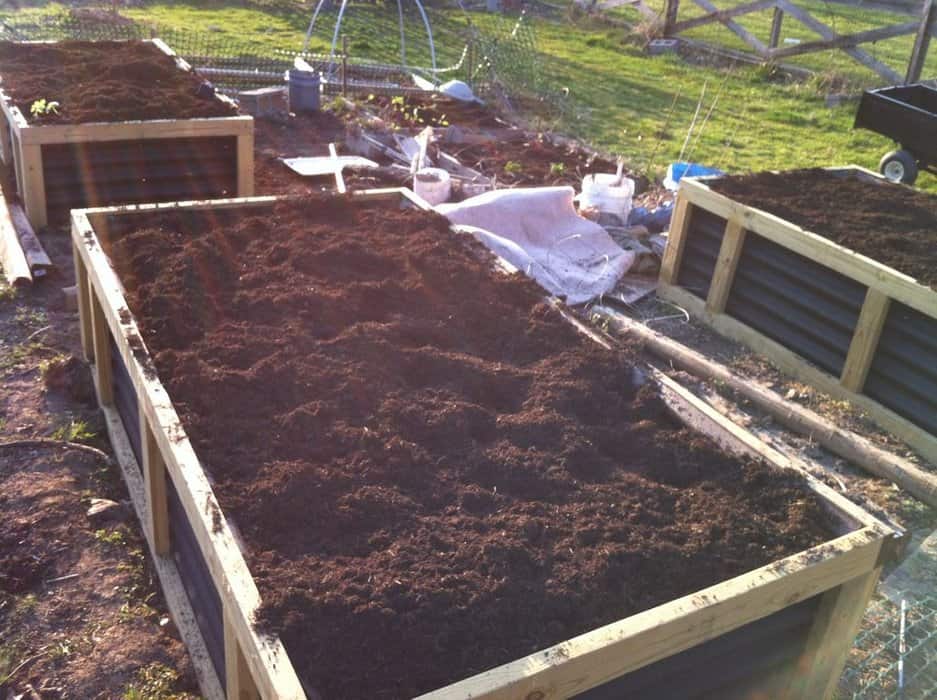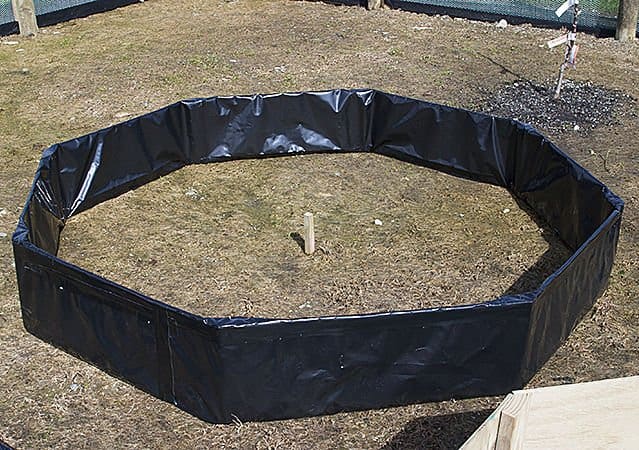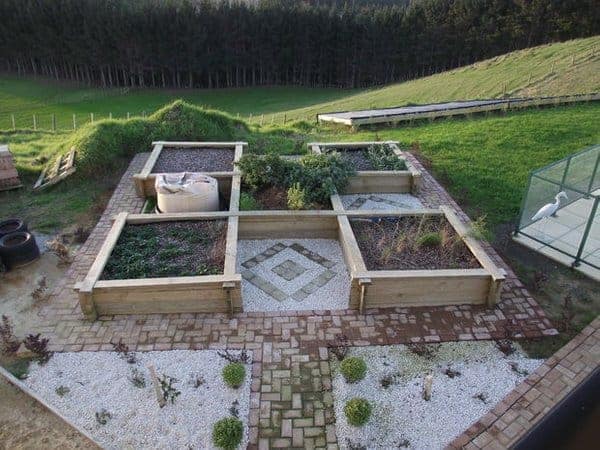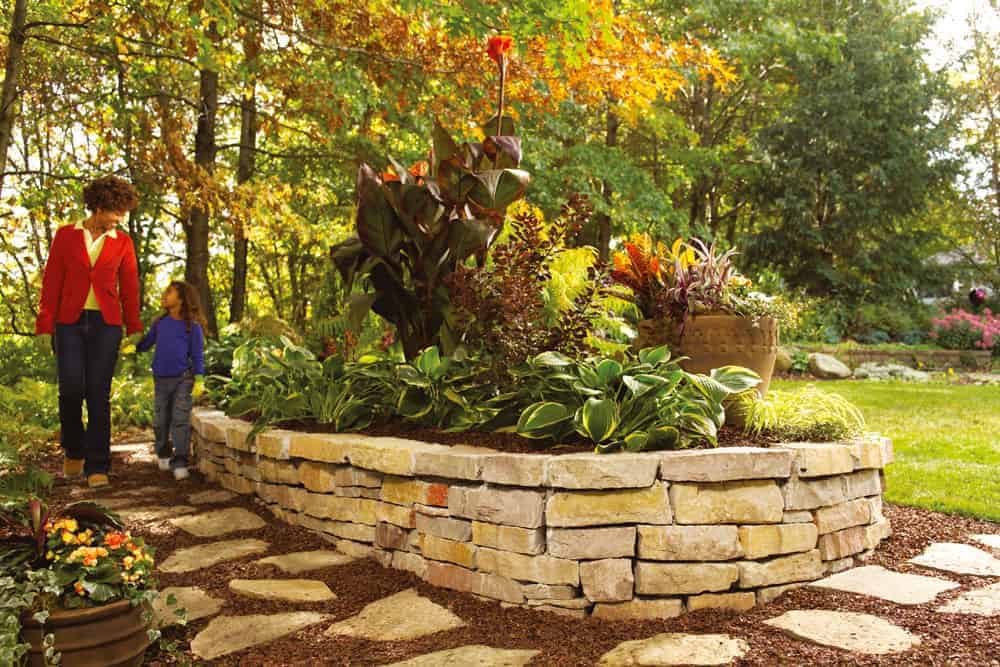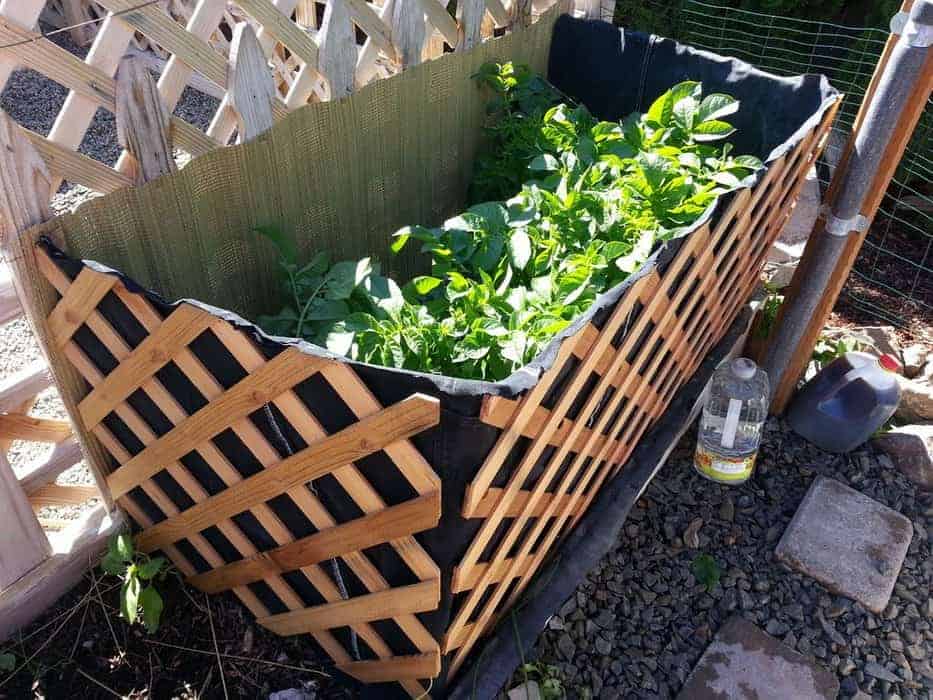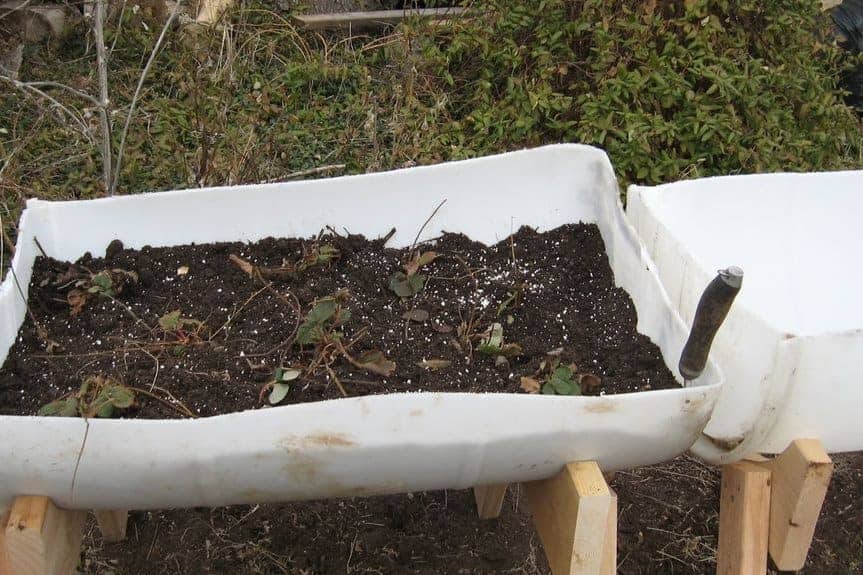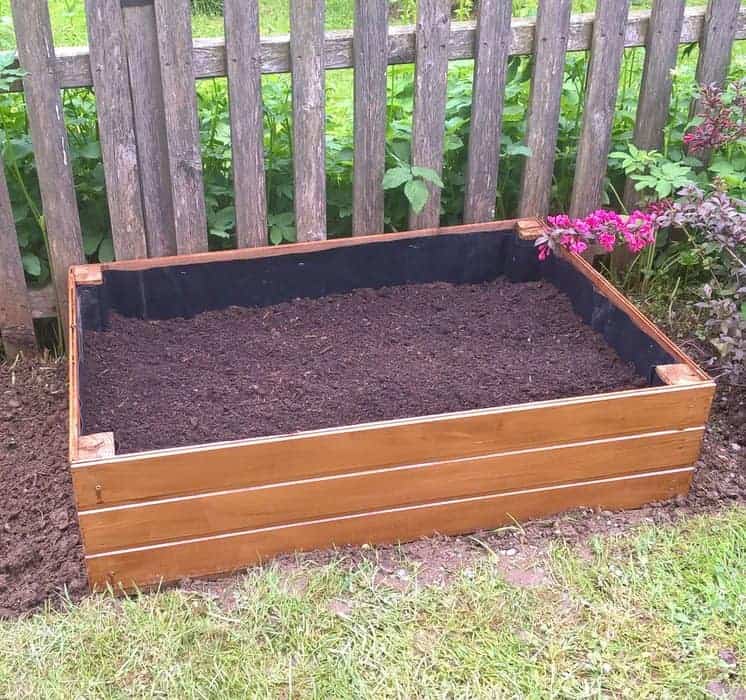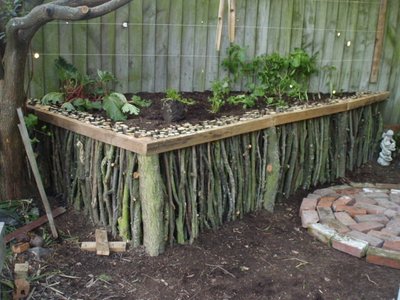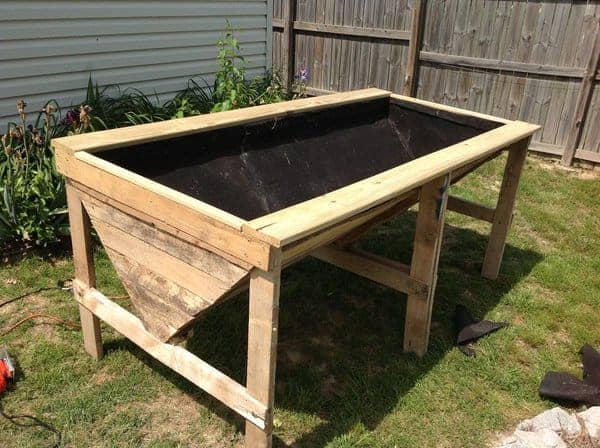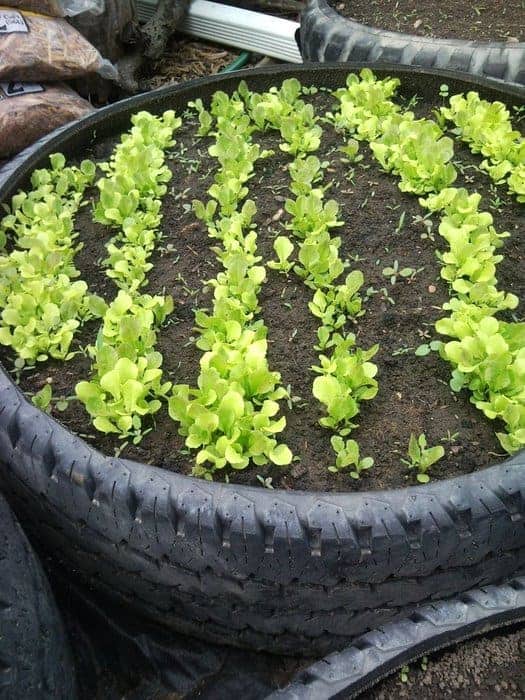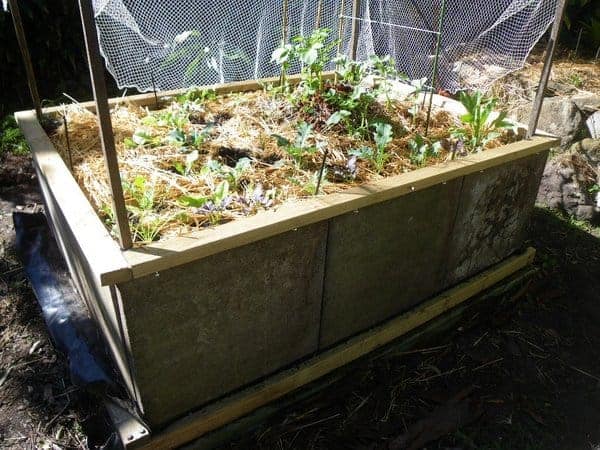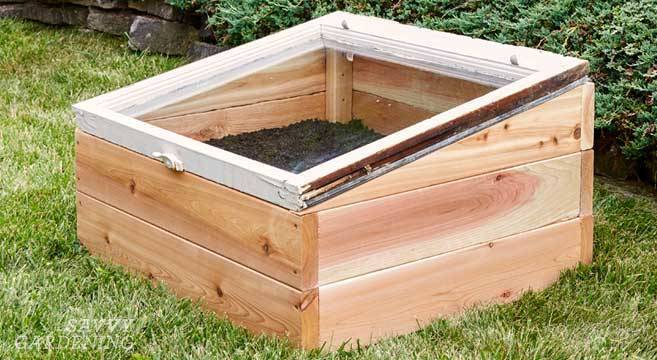When it comes to raised beds, you might think of a simple wooden box filled with soil. However, there are actually many different types of raised beds available. From wooden varieties to those made from metal, concrete, stone, or repurposed objects, the diversity is surprising. Talented gardeners and makers are constantly coming up with new designs, making raised beds a versatile option for any garden.
With so many options available, it’s important to understand the different types of raised beds and what materials are best suited for your needs. In this article, you’ll learn about the various types of raised beds and their benefits, helping you make an informed decision for your garden.
Concrete Panels Raised Bed
If you’re looking for a durable and long-lasting solution for your raised bed, concrete might be the way to go. Unlike wooden planters, concrete is moldable and won’t rot over time. In this DIY tutorial, you’ll learn how to create custom-sized molded panels for your raised bed.
The instructions are detailed and easy to follow, even if you’ve never worked with molding concrete before. Plus, since you’re creating the panels yourself, you can make them any size you need for your garden.
One of the benefits of using concrete for your raised bed is that you won’t need to use plastic liners, making it a more eco-friendly option. However, keep in mind that even when the concrete is molded with aesthetics in mind, it can look a bit dull, depending on your personal taste.
Overall, this project is rated as medium to expert difficulty, so be prepared for a bit of a challenge. But with patience and attention to detail, you’ll have a beautiful and long-lasting raised bed for your garden.
Pros:
- Long-lasting solution
- Modular design
- No need for plastic liners
Cons:
- Concrete can look dull, depending on personal taste
Difficulty level: Medium/Expert
Keyhole Raised Bed From Reclaimed Building Materials
If you’re looking for an easy and affordable way to build a raised bed, keyhole raised beds are an excellent option. Unlike completely round raised beds, keyhole raised beds provide easy access to all parts of the bed. In this project, you can use reclaimed building materials like concrete blocks and old chimney bricks to create a sturdy and aesthetically pleasing raised bed.
To build this bed, you’ll need to follow some simple steps outlined in the tutorial. These steps include making the bed perfectly round and fighting weeds. The tutorial also highlights the benefits of this design, such as not needing any tools and using free materials.
However, there are some cons to consider, such as the heavy lifting involved in building the bed and the potentially crude-looking appearance that may not be suitable for everyone’s taste.
Overall, this project is rated as easy to medium difficulty and is a great option for those who want to build a raised bed without spending a lot of money on materials.
Pyramid Raised Bed
If you’re looking to maximize your planting space in a limited area, a pyramid raised bed might be the solution for you. This design allows for more plants than a traditional raised bed, without sacrificing sunlight. The screwless design of this particular pyramid bed makes it easy to build, adding to its appeal.
Pros of the pyramid raised bed include its unique design and the ability to fit more plants in a smaller area. However, it’s important to note that the wood used in this design is not hydro-isolated by plastic lining, which could lead to rotting or leaching of chemicals from treated wood into the soil over time. To avoid this issue, it’s recommended to use a durable wood like cedar.
Consider a pyramid raised bed if you want to maximize your planting space and add a unique design element to your garden. Just be sure to choose the right wood to ensure the longevity of your bed.
Stacked Up “Advanced” Old Tire Raised Bed
If you’re looking for an eco-friendly and easy-to-build raised bed, consider using old automobile tires. This project is an “advanced” version of the simplest tire raised bed idea, but only in the sense that it gives you more volume because it uses multiple tires. It is still a simple project to build, and the materials are easily available.
One advantage of building a tire tower is that you will have the possibility to line the raised bed with wooden boards. This will not only make it look more natural but also prevent the tires from getting overheated in the sun, which can help your plants stay healthy. Overheated tires can leach more potentially harmful chemicals, so lining the bed can help minimize this risk.
However, it is worth noting that there is always some uncertainty about tires leaching chemicals into the soil. The author of the tutorial offers an interesting opinion on this issue at the end of his article, but it is still a good idea to err on the side of caution and not grow anything edible in tires. This is especially true since we don’t really know what’s in there.
Overall, this project is rated as easy to medium difficulty level. It is a great option for those looking to use easily available materials that would otherwise be landfilled.
Modern Raised Indoor Planter Box
If you’re looking for a modern planter that will add a touch of minimalism to your indoor space, this raised indoor planter box might be the perfect fit for you. With sleek modern lines, this planter box is designed to enhance the aesthetic of any room.
Despite its half-metal appearance, this planter box is actually an all-wood project that can be made with hand tools and some additional effort. However, it’s important to note that this planter box is designed for indoor use only. It features a plastic pot inside the planter, and the wood used in its construction is not water-resistant.
If you’re interested in using this planter box for outdoor use, the author suggests using cedar wood instead, which is common for exterior plant boxes and does not harm the soil.
One of the pros of this modern planter box is its minimalistic and sleek design, which is sure to impress. Additionally, it features a tall design with an additional shelf for added functionality.
However, it’s important to note that this project might be a bit challenging to do without professional tools. The difficulty level is rated as medium/expert.
Overall, if you’re looking for a modern and stylish indoor planter box, this raised indoor planter box might be the perfect fit for you.
Hugelkultur – No Irrigation Raised Bed
If you’re looking for a low-maintenance garden bed, Hugelkultur might be worth considering. This technique involves burying wood at the bottom of the bed to reduce or eliminate the need for additional watering. While the effectiveness of this method is debated, it’s worth doing some research to see if it makes sense for you.
To create a Hugelkultur raised bed, you’ll need a DIY wooden frame, roofing sheets (various types are considered), and a plastic liner in the form of a Bagster dumpster. The use of these basic materials makes it a great scrap/recycling project.
One of the biggest advantages of Hugelkultur is its easy construction process and the chance to repurpose materials. However, some people question whether this method truly eliminates the need for irrigation. It’s up to you to decide if this method is worth trying in your own garden.
“Stone” Blocks Planter
If you want to build a stone planter but don’t have the budget for real stone, cast-concrete blocks can be a great alternative. Though not real stone, they are easy to work with and can be modified to fit your needs.
This tutorial will guide you through the process of building a raised bed wall using cast-concrete blocks. The author uses masonry construction adhesive to secure the wall, which is a simpler solution than traditional masonry.
One advantage of using cast-concrete blocks is the ability to reshape and modify them to ensure a better fit. Additionally, the tutorial demonstrates how to create a level base, which is crucial for stacking the blocks evenly.
Pros of building a stone planter with cast-concrete blocks include ease of construction, while the main con is that it is not real stone.
Planter Wall Blocks Raised Bed
If you are looking for an easy and customizable way to build a raised bed, planter wall blocks might be the solution for you. These blocks can be used as cornerstones for your bed and chemical-free wooden boards can be inserted into the designated spaces. Once the blocks are fixed into place, your raised bed is ready to use.
One of the great advantages of this method is its simplicity. You don’t need any special skills or tools to assemble the bed. Additionally, the blocks can be stacked on top of each other and secured with a rod to create higher raised beds.
However, it is important to note that planter wall blocks might not be available outside of the U.S. If you are interested in this method, be sure to check if these blocks are available in your area.
Here are some pros and cons of using planter wall blocks for your raised bed:
Pros:
- Easy to assemble
- Customizable
- Chemical-free
Cons:
- Might not be available outside of the U.S.
Octagonal Raised Beds
If you’re looking for a unique raised bed design, consider making an octagonal one. This shape allows for more soil volume while still remaining stable and easy to move around before filling. Furthermore, creating several of these beds can result in an interesting path pattern between them.
There are several pros to using this design, including its interesting shape, stability, voluminous capacity, light construction, and well-isolated and rot-proofed structure. However, making an octagonal raised bed takes skill and tools, and some may not like the plastic wrapping on the outside. Additionally, it can be difficult to reach the center of the bed.
Overall, creating an octagonal raised bed is an advanced project that requires some expertise. However, the end result is a unique and functional addition to any garden.
| Pros | Cons |
|---|---|
| Interesting shape | Takes skill and tools to make |
| Stable | Some may not like plastic wrapping on the outside |
| Voluminous | Hard to reach the center of the bed |
| Light construction | |
| Well-isolated and rot-proofed |
Remember to carefully consider the pros and cons before deciding to create an octagonal raised bed.
Upcycled Wheelbarrow Raised Bed
Transforming your old garden wheelbarrow into a raised bed is a simple and sustainable option. Just add some holes in the bottom and fill it with soil according to the instructions. For added protection against rust and leaching metal and paint components, consider using a pond liner.
Pros of this method include its simplicity, mobility, and recycling potential. However, keep in mind that the wheelbarrow may rust over time and has limited volume.
Overall, this project is rated as very easy in terms of difficulty level.
Consider this option if you have an old wheelbarrow lying around and want to repurpose it in a creative way.
Modern Outdoor Planter Box
If you’re looking for a stylish and voluminous planting bed for your outdoor space, the Modern Outdoor Planter Box might be just what you need. These boxes are similar in style and color to the previous project, but are closer to the ground and have more volume, making them perfect for planting.
In addition to wood, these planter boxes include metal elements for added strength. While the author of the tutorial cuts and works the metal himself, it’s recommended to hire a professional if you’re not experienced with metalworking.
The sleek design of the Modern Outdoor Planter Box makes it a great addition to any outdoor space. However, it’s important to note that this project may be challenging to complete without professional tools. Additionally, the tutorial doesn’t specify how to choose or treat the wood for long-lasting outdoor use, but this information can be found in other tutorials.
Overall, the Modern Outdoor Planter Box is a medium to expert level project that can add both style and function to your outdoor space.
No-Nails Raised Plant Bed
If you’re looking for a simple yet sturdy raised planting bed, the no-nails raised plant bed might be just what you need. This classic design relies on notches instead of screws and nails, making assembly a breeze. Plus, its large size means that you can prepare the materials anywhere and then assemble it at its final destination.
One unique aspect of this tutorial is the recommendation to use pressure-treated timber, which may go against the advice of some gardeners. However, the author argues that it can be a great option for this type of bed.
If you’re looking for an alternative to timber, the tutorial also suggests using metal roofing sheets. This material can often be obtained for less money than timber and can be easily formed into an organic shape without requiring precision cutting. To cover the naturally sharp edges of the metal, the tutorial recommends using drain pipes, which are easy to cut and install. The combination of metal and pipes can give your raised bed a retro-sci-fi look.
One potential downside of using metal is that it can become very hot in the sun, so be sure to keep an eye on the temperature.
Overall, this project is rated as easy to medium difficulty, so it should be accessible to most DIY enthusiasts. With its screwless assembly and simple design, the no-nails raised plant bed is a great option for anyone looking to create a long-lasting and interesting planting space.
Dry-Stone Raised Bed
If you are looking for a beautiful and long-lasting garden bed, a dry-stone raised bed might be the perfect solution for you. Unlike other materials, natural stone offers a timeless aesthetic that blends perfectly with any outdoor setting. In this Australian tutorial, you will learn how to build a dry-stone raised bed that will age nicely and fit with any vegetation.
To build a dry-stone raised bed, you will need to use mortar to secure the stones in place. While some people choose to simply stack the stones, this method has its risks and may not be as secure. With true masonry work, you can create a beautiful and sturdy raised bed that will last for years to come.
Pros:
- The beauty of natural stone is hard to match.
- Dry-stone raised beds offer a timeless aesthetic that blends perfectly with any outdoor setting.
Cons:
- Requires true masonry work (though on a small scale).
- Since stones are heavy, it may require some effort to build the raised bed.
Overall, if aesthetics is truly important to you, building a dry-stone raised bed might be worth the effort. It is a perfect choice for those who want a beautiful and long-lasting garden bed that will fit perfectly with any vegetation.
45-minute Potato Raised Bed
If you’re looking for a simple and quick way to grow potatoes, a 45-minute potato raised bed might be just what you need. This project is perfect for those who want to use recycled or repurposed materials, as it uses old jeans fabric and repurposed trellises.
One of the advantages of this raised bed is that it can be easily taken apart, making it easy to pour out all the soil and potatoes instead of digging through the entire bed. Additionally, it’s an ideal option for those who want to grow potatoes but don’t have a lot of space.
However, keep in mind that this bed is not designed to last more than one growing season. If you’re looking for a more long-term solution, you may want to consider a more durable option.
Here are some key features of the 45-minute potato raised bed:
- Quick and easy to build
- Uses recycled or repurposed materials
- Ideal for potato growing
- Can be easily taken apart for harvesting
Reclaimed Cedar Planter Bench/Raised Bed
If you’re looking for a woodworking project that is both functional and aesthetically pleasing, the Reclaimed Cedar Planter Bench/Raised Bed might be just what you need. Made entirely of reclaimed cedar wood, this project features a spacious bench, two smaller planter boxes on the sides, and two large raised beds behind the seat. The pond liner used in the construction of this project ensures that moisture is well taken care of.
The Reclaimed Cedar Planter Bench/Raised Bed is not only a beautiful addition to any garden, but it’s also environmentally friendly. The use of reclaimed materials means that you’re reducing waste and helping to preserve the environment. Plus, the raised beds are perfect for creating an environment-friendly garden filled with pollinator-friendly flowers.
While this project has many pros, such as its originality, usefulness, and cozy appearance, it also has some cons. The size and complexity of the project demand skill and experience, or professional help.
Barrel Raised Bed
If you have old rain barrels lying around, you can easily turn them into grow beds by cutting them in half. Rain barrel plastic is usually food grade, which means no harmful chemicals will leach into your soil. To make a raised grow bed, you can put the barrel halves on an easy-to-build wooden base.
Barrel raised beds are practical to use and safe for growing food. They are easy to make and require minimal effort. However, they might not be the most decorative option available.
Pros:
- Safe food-grade plastics
- Material usually easy (and cheap) to obtain
- Easy to build (some cutting included)
Cons:
- The looks
Consider using barrel raised beds if you have old rain barrels and want to repurpose them for gardening. They are a practical and safe option for growing food.
Neat Classic Raised Bed Planting Box
If you are looking for a classic and simple wooden raised bed, this project might be perfect for you. This small, neat board raised bed is both stylish and practical, and can fit into any garden. It is also environmentally friendly, as it is made entirely from recycled wood.
The instructions for building this raised bed are detailed and easy to follow, making it a great project for DIY enthusiasts of all skill levels. However, it should be noted that the size of the bed might be a limitation for growing larger plants or crops. But, you can always adjust the measurements to suit your needs.
Pros:
- Classic and nicely built raised bed.
Cons:
- Hard to find.
- The size might be a limitation for growing some larger plants or crops, but you can always change the measures.
Wooden Stick Raised Bed
If you’re looking for a natural and rustic look for your raised bed, the Wooden Stick Raised Bed design may be for you. This design utilizes natural wood and big branches to create the most prominent part of the bed, similar to a primitive fence. Despite its basic appearance, the design is well thought out, with precise instructions to ensure stability, durability, and water-resistance.
Pros of this design include its beautiful natural contour and overall look, as well as the fact that the materials are free. However, it can be challenging to fix irregularly-shaped branches in line, especially if you don’t want the liner to show. Additionally, introducing diseased branches could potentially bring pests into your garden, so it’s important to be cautious when selecting materials.
Pallet Board Raised Bed
If you’re looking to save some money while creating a tall planter box for outdoor use, consider building a pallet board raised bed. This classic design, created by Instructables user elco_chan, utilizes a steep/triangular cross-section to increase stability and reduce the risk of pallet boards cracking under pressure.
However, it’s important to pay attention to the quality of the pallets being used. Elco_chan recommends using heat-treated wood and avoiding pallets that have been chemically treated with toxic methyl-bromide. Look for a mark on the pallets to confirm the treatment method.
The pros of this design include its affordability and stability. However, some may not appreciate the rough exterior of pallet boards, and there may not be enough space for plants with large roots.
Consider the following tips when building your own pallet board raised bed:
- Use heat-treated pallets to ensure safety
- Sand down any rough edges to prevent splinters
- Line the interior with landscape fabric to prevent soil erosion
- Consider adding casters to the bottom for easy mobility
By following these guidelines, you can create a budget-friendly and sturdy raised bed for your garden.
Cold Frame Raised Bed
If you’re looking to plant early in the year, a cold frame raised bed is a great option to protect your veggies from frost. This bed utilizes screen door closers to make it easy to ventilate and water your plants.
One major advantage of this bed is its easy construction, making it a practical addition to any garden. However, the plastic cover used in this design is lighter and safer but less transparent and aesthetically pleasing than other options such as old windows.
Consider using this cold frame raised bed to ensure your early planting success and protect your crops from unexpected frost.
Old Automobile Tire Raised Bed
If you’re looking for a simple and eco-friendly way to create raised beds, consider using old car tires. This method is popular among gardeners who want to upcycle and make use of materials that might otherwise be thrown away. One of the simplest ways to create a tire raised bed is to fill the tire with soil after laying it on the ground. You can even paint the tire to give it a more polished look.
While some people choose to position and paint the tire without cutting it, this tutorial recommends cutting one sidewall of the tire to use the full upper surface for planting. The sidewall that is cut off can be used as a practical tree ring. However, it’s important to note that there are some potential downsides to using old car tires as raised beds. Some people worry that the tires may leach harmful chemicals into the soil, although this is a topic of debate. Additionally, if the tire is not protected by a light-colored cover, it may overheat in the sun.
Consider the pros and cons before deciding whether this method is right for you. Overall, it’s an easy and inexpensive way to create raised beds while also recycling old materials.
Pros:
- Easy to obtain
- Easy to make
- Recycling
Cons:
- May leach harmful chemicals (debatable)
- May overheat in the sun if not protected by a light-colored cover
Concrete Pavers Raised Bed
If you want a raised bed that is sturdy and long-lasting, consider using concrete pavers. This material is durable and won’t decay like wood. However, creating a concrete paver raised bed requires heavy lifting and additional work to secure the pavers in place.
One advantage of using concrete pavers is that they can help prevent tree roots from growing into your bed. This is particularly useful if you have a problem with tree roots in your garden.
It’s important to note that concrete holds more heat than wood, especially when exposed to the sun. This can be beneficial or detrimental depending on the plants you are growing. Keep this in mind when deciding whether to use concrete pavers for your raised bed.
Overall, concrete pavers can be a practical and durable option for a raised bed, but they may not be the most aesthetically pleasing choice. Consider your specific needs and preferences before deciding which material to use for your raised bed.
Pros:
- Sturdy
- Long-lasting
- Helps prevent tree roots from growing into bed
Cons:
- Involves heavy lifting and additional work to secure
- Not the most aesthetically pleasing option
- Holds more heat than wood
Old Windows Cold Frame Raised Bed
Repurposing old windows is a great way to create a cold frame raised bed for your garden. This project is easy to construct and offers a building plan and detailed instructions, along with suggestions for improvement such as using automatic vent openers.
The cold frame functions like a glasshouse, allowing you to grow winter vegetables or start seedlings early. However, it’s important to note that the wood is not isolated from soil moisture, so choosing a durable type of timber or adding an appropriate plastic liner can help make the bed more lasting.
One of the pros of this project is that it’s easy to construct and repurposes old windows. However, it’s important to be careful when propping the cold frame open with a stick, as the window may fall and shatter.
Summary
When planning to build a raised garden bed, it’s important to consider the size and location of the bed, the materials you will use, and the plants you will grow. You can use wood, stone, or bricks to build the bed, and fill it with soil and compost. Consider the amount of sunlight the bed will receive and the types of plants that will thrive in that environment. With proper planning and construction, a raised garden bed can provide a beautiful and productive addition to your yard.
